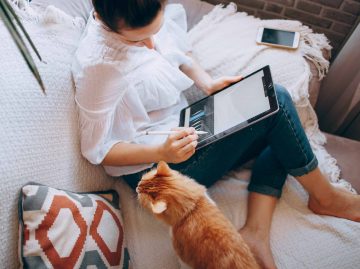News
Return to Working From Home A Possibility

A return to working from home is being mooted by Prime Minister Boris Johnson, as attention turns to a potentially bumpy journey through Autumn and Winter.
With Covid-19 hospitalisations rising steadily at present, scientific modelling – which provides a range of scenarios – has suggested, as a worst-case scenario, that there may be as many as 7,000 new hospitalisations per day if the trend was to go unchecked.
Although this is one of a number of possible scenarios, the Government has suggested a return to mandatory face masks, vaccine passports and remote-working as a Plan B should the NHS become overwhelmed, among other factors.
“The most important and effective way of reducing the spread of the virus is not to be in contact with other people, so people who can work from home continuing to work from home,” said Prof Andrew Hayward, a member of advisory board Sage.
“Not having to get on public transport, [and] not doing all of the things you do around work, will make a significant difference to transmission if we get into trouble.”
Millions of workers have already sampled the home-working lifestyle during the first and second lockdowns during Spring and Winter 2020, but questions remain as to whether every remote worker has a suitable workstation, and one that will avoid posture-related injuries.
How should your company help?
When working from home, your company should consider how to maximise your talents and limit the disruption caused. Do they have a remote workstation assessment scheme in place? If not, why not?
By employing a company, like Onhealth, to drive a remote workstation assessment scheme, your company can ensure the best possible external working conditions for staff, limit the possibility of injury due to working from home and boost employee-employer relations with a programme that shows they care about you just as much as if you were in the office.
What does it entail?
A remote workstation assessment scheme involves each individual nominated for it being given one-to-one screen time with a healthcare professional.
After receiving photos of the workstation, they assess the potential hazards and offer advice and guidance, which is submitted verbally through a virtual meeting as well as in a detailed report.
HR departments can then use this to install an action plan; the end result is the maximising of home working potential, the avoiding of unnecessary sick days due to injury and a boost to employee relations.
Want to get started?
Contact our team today or click here to find out more.
